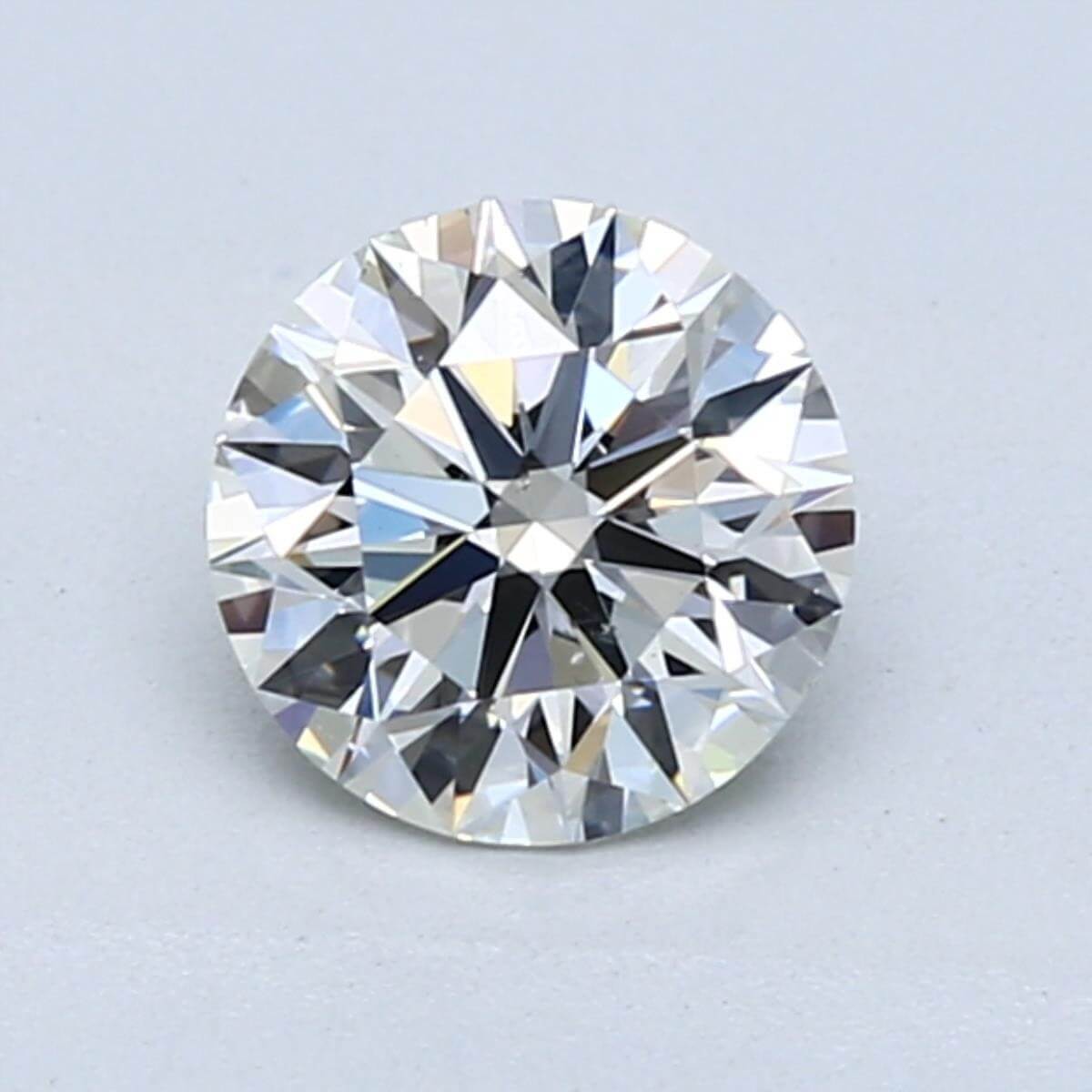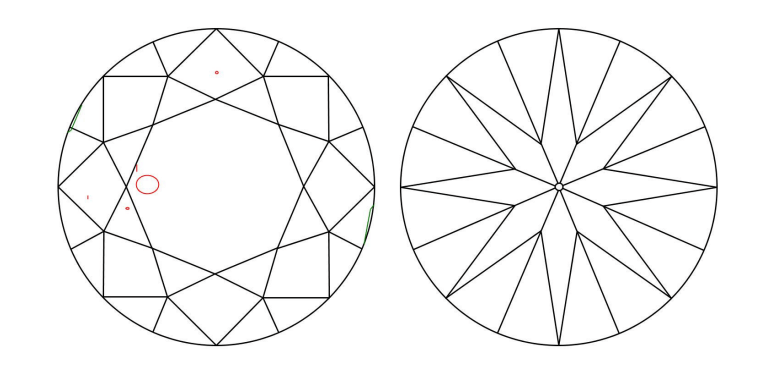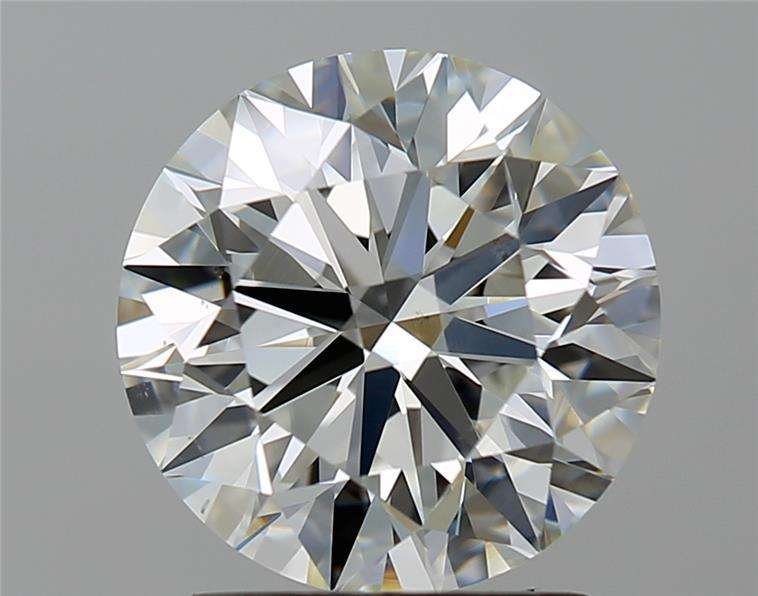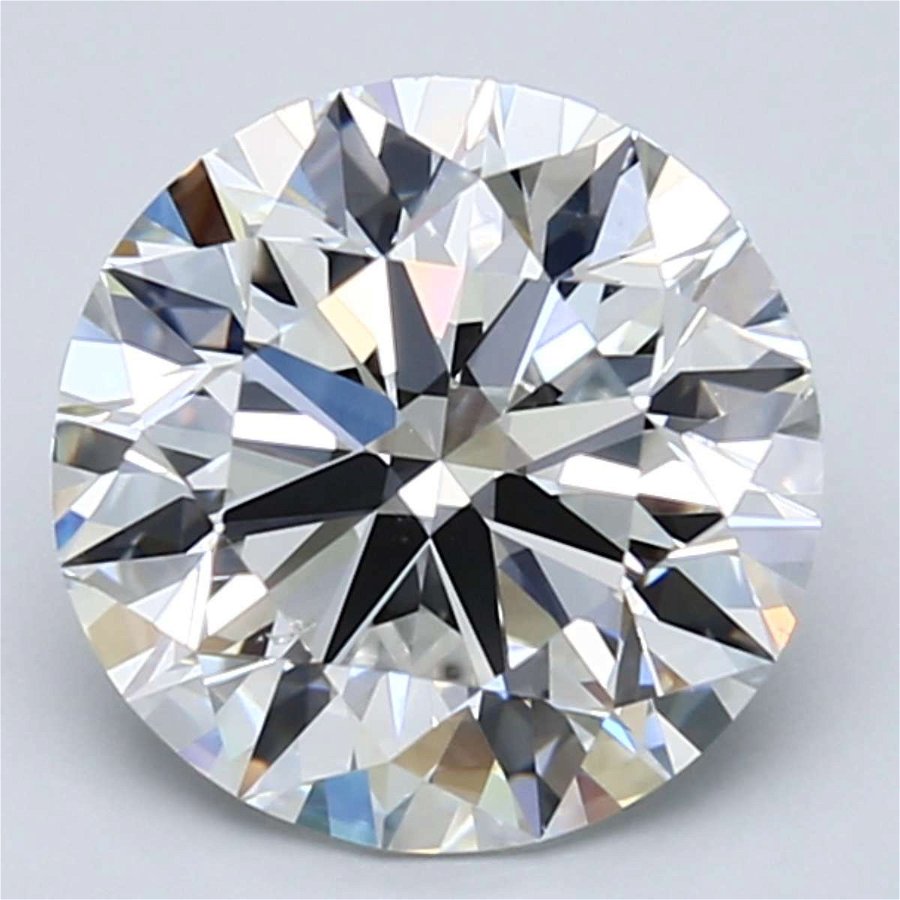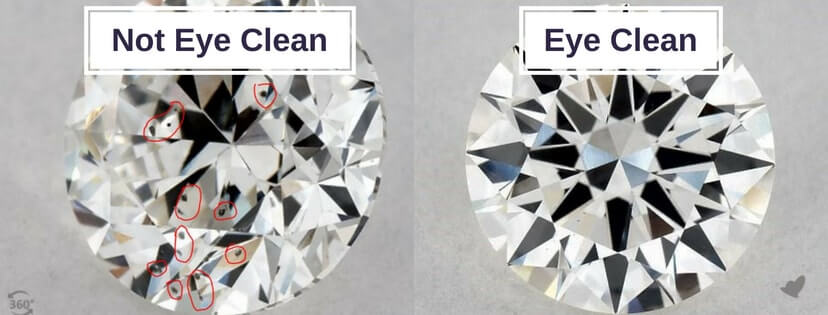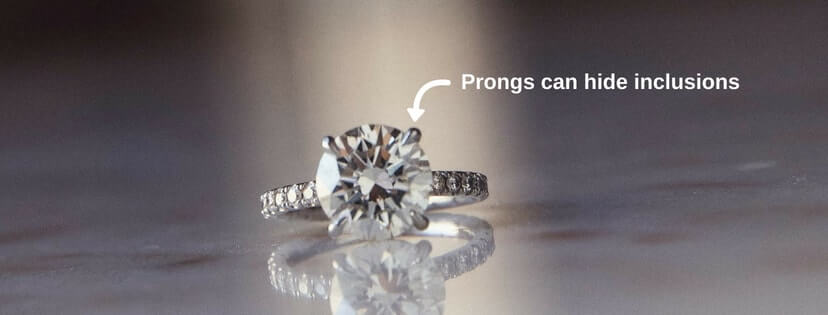March 8th 2022
SI1 vs VS2: Clarity Comparison
By Devin Jones
You're embarking on one of life's greatest (and most expensive) journeys - shopping for the perfect diamond. You've done your homework, but one big question remains: should you stick with VS2 clarity or step down to SI1?
In this guide we explore the differences and give you some no-BS advice on finding your perfect eye clean diamond.
🛡️ Check your diamond 💎 Search 2M+ diamonds
What do SI1 and VS2 clarity mean?
The classic definition is that SI1 clarity diamonds are diamonds that have slight inclusions and VS2 clarity diamonds are diamonds that have very slight inclusions.
Diamond inclusions are tiny imperfections inside the diamond or on the surface of the diamond. The clarity grades given by agencies like the GIA basically tell you how big of an issue these inclusions are.
SI1 clarity diamonds should have slightly worse inclusions than VS2 clarity diamonds.
PRO TIP: You should always avoid cavities, chips, and any diamonds with a comment stating that the "clarity grade is based on clouds not shown".
Stepping up or down a clarity grade can alter the price of your diamond by up to 20%. Finding an eye clean SI1 or VS2 diamond is one of the best ways to find a great looking diamond without overspending on quality you can't appreciate with your naked eye.
For example, take a look at this beautifully cut SI1 clarity diamond.
It's not perfect by any means - it has a crystal on the center table and also has a comment on it's GIA certificate stating that the diamond has pinpoints and clouds that are not shown on the GIA clarity plot below.
Just because the above example is SI1 with an inclusion on the center table doesn't necessarily mean it isn't eye clean (we consider this diamond eye clean for the record). Whether or not the imperfections are visible to the naked eye depend on whether the inclusions are light or dark (these are light), where they're located (center table being the worst location), and what type of inclusions they are.
However, even eye clean diamonds should be avoided if they have "bad material", meaning they have a lot of pinpoints or clouds that make the diamond less sparkly. You should also always avoid diamonds if they have inclusions that are open to the surface of the diamond such as a diamond cavity, chip, indented natural (unless it is very, very minor), internal laser drilling, or a laser drill-hole.
Some of these inclusions can cause a structural issue for the diamond (like a cavity or chip), some are red flags that lower the value of the diamond (drilling), and many of them can collect dirt, oil, or grease that can make the diamond less sparkly.
🛡️ Check your diamond 💎 Search 2M+ diamonds
VS2 Clarity Grade
The most popular diamond clarity grade for engagement ring shoppers is the VS2 clarity grade because it offers a great balance between price and quality. VS2 clarity means that the diamond has small inclusions which are not visible to the naked eye, but that could be seen under 10x magnification by a trained eye. These inclusions are considered very minor and shouldn't affect the diamond’s visual appearance.
Generally speaking, if you're shopping online you should be looking for a VS2 clarity diamond or better but if you're shopping locally you may be able to find eye clean SI1 or SI2 diamonds that would be tough to judge based on pictures you see online. This is where a local jeweler expert can help you. While you may save some money by buying an SI1 or SI2, keep in mind that local jeweler margins tend to be higher than the margins charged by large online jewelers (you're getting less value for your dollar, but the price of the lower clarity diamonds is still lower).
This 2 Carat H VS2 diamond is a beautiful eye clean stone.
SI1 Clarity Grade
SI1 clarity diamonds are the fourth most popular clarity grade for online diamond shoppers behind VS2, VS1, and VVS2 clarity diamonds. They tend to be one of the most popular clarity grades for shoppers who are looking at diamonds locally since it's easier to judge their eye cleanliness in person. If you are going to buy an SI1 diamond it may be best to shop in stores.
SI1 clarity indicates that a diamond has some small inclusions that are more easily noticeable under 10x magnification, but are difficult or impossible to see with the naked eye. More often than not these diamonds still exhibit inclusions that are visible to the naked eye.
Generally these inclusions are either a single, large inclusion (like this diamond) or a lot of small inclusions (like this one) that are poorly placed (top center of the diamond is the worst location for these).
This 3.01 Carat E SI1 diamond a good example of an eye clean SI1 diamond.
Are SI1 and VS2 Diamonds Eye Clean?
Generally speaking, the vast majority of VS2 diamonds are eye clean but most SI1 diamonds generally are not eye clean (despite what your local jeweler might tell you). Below the SI1 clarity grade (so for SI2, I1, I2, and I3 clarity grades) it becomes incredibly difficult to find eye clean diamonds.
Furthermore, if you do find an SI1 or lower clarity graded diamond that looks like it is eye clean you should be careful to read the additional comments on the GIA Certificate. Beware of the comment “clarity grade is based on clouds that are not shown” for diamonds that are SI1 or lower as this means the diamond has a very substantial cloud that will affect light performance.
Should I buy an SI1 or VS2 Diamond?
Buying an SI1 clarity or VS2 clarity diamond is a great way to help you stretch your budget while still getting a beautiful stone. On the GIA’s diamond grading scale an SI1 clarity grade is one level worse than a VS2 clarity grade, but an SI1 diamond may not always look worse than a VS2 diamond - it all depends on the types of inclusions and their locations.
These imperfections should be pretty easy to spot if you see a magnified video of the diamond or view it through a jeweler’s loupe (a tiny magnifying glass). Keep in mind that when you’re looking at diamond images online they are often enlarged by 20x or even more - the inclusions you see at this level of magnification won’t necessarily be visible in person.
Pro tip: shrink diamond images down to the size of your pinky finger nail on your computer monitor or smart phone to get a more realistic look.
What does eye clean mean?
Eye clean is the term used to describe a diamond that appears flawless to the unaided human eye, but that may contain imperfections that are visible using magnification such as a jeweler’s loupe. Some SI1 diamonds have imperfections that are visible to the naked eye and are thus less desirable than other SI1 diamonds that do not have visible inclusions. Often times an eye clean SI1 diamond will cost nearly as much as a VS2 diamond and consumers will still buy them because buyers are under the impression that the diamond’s lower clarity grade always means a cheaper price.
What diamond clarity should I buy for an engagement ring?
Most jewelers will recommend you purchase an SI1 or VS2 clarity grade because it allows you to spend more money in other areas, such as getting a better color grade or a larger carat weight. StoneAlgo recommends you explore the best available prices for VS2 diamonds before looking at SI1 diamonds because VS2 diamonds should be eye clean while SI1 diamonds take more work to evaluate.
However, it’s important to view images and videos of any diamond you plan to buy online before you purchase. Oftentimes these videos and images are far superior to viewing the diamond through a jeweler’s loupe in terms of seeing the imperfections easily.
You should not only consider the types of inclusions but also the inclusions that are listed on the certificate as "not shown" - if these inclusions include clouds then you should be wary, especially with SI1 or worse clarity. The placement of the inclusions relative to the flat top of the diamond is also an important point of consideration.
Ideally, any inclusions should not be visible through this flat top area - this can create even more room for concern in fancy cut shapes that have larger tables. If you want to see the impact and various ways to save money when buying an engagement ring, check out our post on how to maximize your engagement ring purchase.
🛡️ Check your diamond 💎 Search 2M+ diamonds
Can a jeweler hide an inclusion?
When a jeweler sets a diamond in a setting he can choose which parts of the diamond are covered by the prongs on the setting that hold the stone in place.
Certain inclusions that could cause a diamond to be graded as SI1 or SI2 (one grade worse than SI1) could be easily covered if they appear near the outer edge of the diamond where a prong can be positioned over the visible inclusion.
Other types of inclusions, such as thin, white, hair-like inclusions are less easily discerned without the aid of a microscope, especially if they are near the bottom of the diamond or off to the side.
What is the difference in price for an SI1 vs VS2 diamond?
According to our diamond price calculator an SI1 diamond costs 18% less than a similar VS2 clarity diamond. That said, eye clean SI1 diamonds tend to be priced like VS2 clarity diamonds and the cheapest VS2 diamonds may not be eye clean.
How do I find an eye clean diamond?
If you're searching for an eye clean diamond you have two options: shop online or go to your local jeweler in person. Generally speaking, we recommend you shop online if you plan to buy an eye clean diamond that is VS2 or higher in clarity grade. If you want to find an SI1 diamond, your best bet is to work with a local jeweler so you can review the diamond in person. That said, your local jeweler is going to basically online shop for your SI1 diamond anyways and the only advantage is that he can help you evaluate it in person. The prices you pay will likely be higher in store than they are online.
If you're shopping online, filter your search for all clarity grades VS2 or better. You never know when a random VVS2 clarity diamond might be priced to sell because few people are shopping for them (unless you're looking at D or E color diamonds, in which case high clarity grades are more popular).
If you use StoneAlgo's Diamond Search Engine I'd recommend further filtering for cut scores of 8 - 10 if you're shopping for a round diamond, which would mean you're shopping for the top 50% of GIA excellent cut diamonds in terms of sparkle and light performance. In order of importance I personally try to stay within these minimums but maximize Cut, Carat, Color/Clarity in that order. Here's a search that incorporates the filters discussed above if that helps: StoneAlgo Custom Search.
© 2024 StoneAlgo, Inc. All rights reserved.

